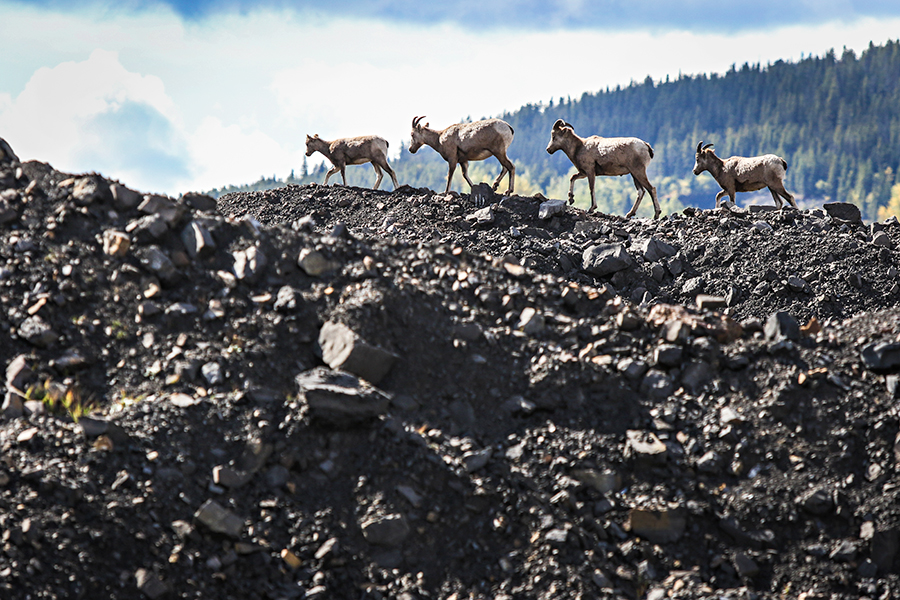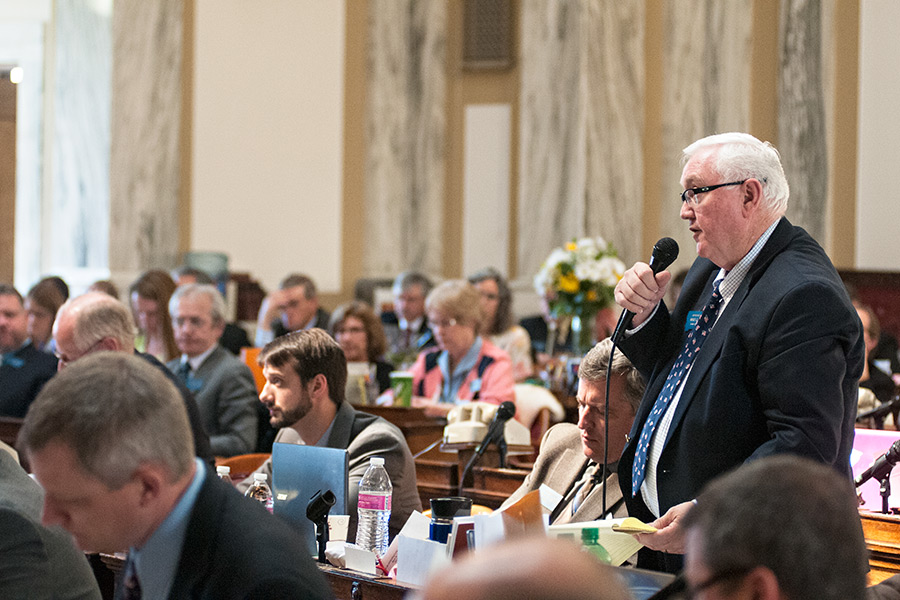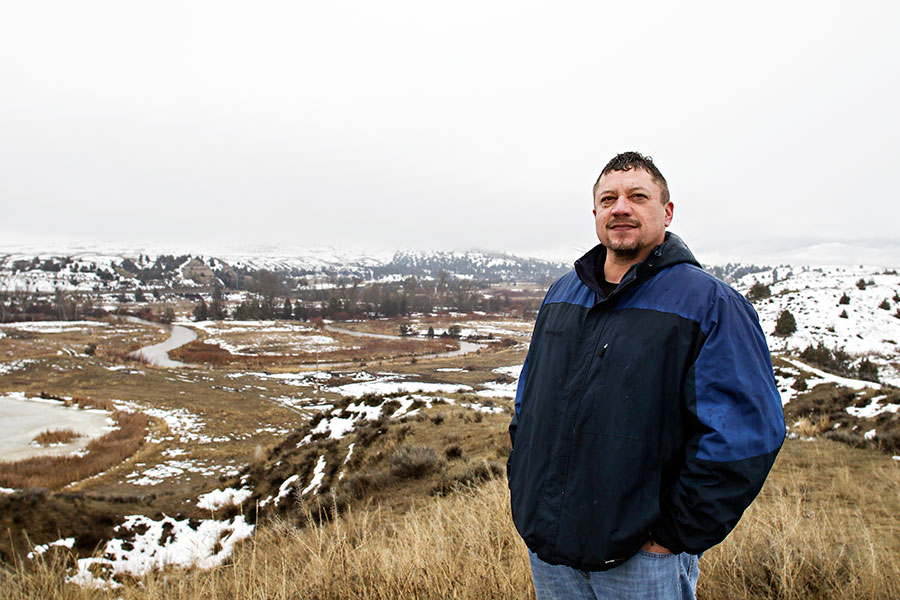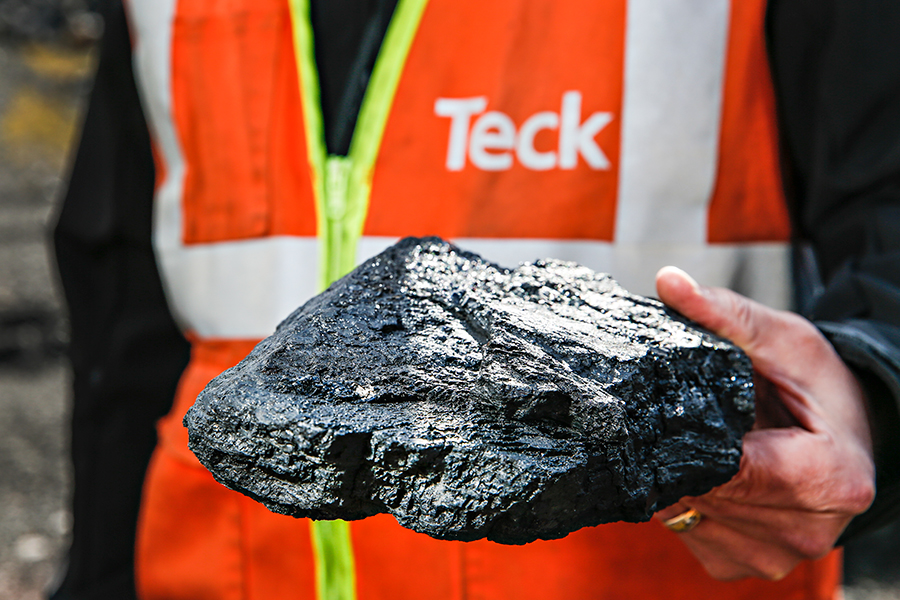Lincoln County Lawmakers Seek to Roll Back Lake Koocanusa Pollution Standard
With the EPA poised to accept a rule that strengthens Montana’s environmental safeguards for fish species at the U.S.-Canada border, the Montana Legislature is considering a measure to quietly rescind it
By Tristan Scott
Republican lawmakers from Northwest Montana are advancing legislation that would torpedo a newly adopted water quality standard crafted through years of scientific work to protect fish species in Lake Koocanusa and the Kootenai River, the international waterway at the center of a sprawling effort to curb toxic chemicals leaching into the state from Canadian coal mines upstream.
In support of their bill to repeal the standard, which is the sole aim of Senate Bill 324, the legislators claim the process to develop the criteria was “jammed through the system,” even as they concede it is the product of a six-year collaboration by a multitude of agencies spanning the U.S.-Canada border and involving leading scientific experts from across the globe, including two federal governments and multiple sovereign tribal nations.
The engineers of SB 324, Sen. Mike Cuffe, R-Eureka, and Rep. Steve Gunderson, R-Libby, insist they were hoodwinked by “environmentalists” who tried to “slip [the rule] past” late last year, when state regulators adopted a new proposed site-specific water quality standard for the chemical selenium, which in Lake Koocanusa has spiked to levels deemed harmful for a suite of fish species.
Cuffe and Gunderson maintain the final procedural steps were rushed despite their direct involvement in the lengthy regulatory process, the extent of which Cuffe repeatedly emphasized to members of the Senate Natural Resources Committee on Feb. 22, when the bill surfaced for the first time at a last-minute hearing.
“I’ve been part of [the process] since the beginning. I was at the very first meeting, I was at every meeting,” Cuffe said. “Lake Koocanusa is my country. And if anyone believes that I’m not going to do the best thing for my country then you don’t know what you’re thinking.”
Still, with days left before the U.S. Environmental Protection Agency (EPA) hits its deadline to approve the state’s new administrative rule on Friday — a concurrence that would furnish Montana with an enforceable water quality standard at the border for the first time while also providing a tool to avoid costly litigation — Cuffe and Gunderson are pressing the Legislature to rescind it.
“I am asking you to help me hit the reset button,” Cuffe told committee members. “We think the process was flawed. We think something happened where they decided, ‘we are going to get a standard out by the end of the year’ and they accelerated it through.”
Gunderson put an even sharper point on the allegations he and Cuffe have been making for months, claiming the rule was adopted through a procedural sleight of hand prior to the installment of a new Republican administration under Gov. Greg Gianforte.
“The process has been driven through just like a freight train at high speed over a trestle that’s washed out, and it continues today,” Gunderson told committee members. “Let’s slow it down, let’s stop it, let’s do whatever we have to do.”

The problem with slowing it down, state environmental regulators and other architects of the new rule say, is that a 60-day window for the proposed standard’s approval is rapidly closing, and the EPA is slated to accept the state’s recommendation this week. If SB 324 succeeds, it will immediately place Montana and Lake Koocanusa at odds with the federal Clean Water Act.
“No reset is needed, Senator Cuffe,” Chris Dorrington, the newly appointed director of the Montana Department of Environmental Quality (DEQ), who was tapped in December by the current Republican administration, said at the hearing, where he provided lengthy testimony in opposition to the bill and stood for questions.
“This process has been ongoing for six years,” Dorrington said. “The data taken from water in Lake Koocanusa and from fish in Lake Koocanusa show that the selenium level in the water column is harming fish right now. I have shared with Senator Cuffe in four different meetings the data that substantiates this model and that has resulted in a protective standard for fish in this lake. These aren’t imaginary fish in lakes all over the U.S. These are fish in this lake right now.”
The current selenium standard for water bodies was established in 1987 at 5 micrograms per liter. In 2016, the EPA developed updated recommended national criteria at a value of 1.5 micrograms per liter for lakes and reservoirs and 3.1 micrograms per liter for rivers, while also suggesting that states use site-specific standards whenever appropriate and applicable.
In Montana, the DEQ opted to pursue a site-specific standard for Lake Koocanusa and the Kootenai River due to the sensitivity of its fish species and the increasing load of toxic chemicals bearing down on the waterway from piles of waste rock in Canada. The state Board of Environmental Review (BER) approved a site-specific standard last December, setting the new criteria at 0.8 micrograms of selenium per liter on the lake and 3.1 micrograms per liter on the river.
Prior to BER approval, the site-specific criteria also received a hearing before the Montana Legislature’s Water Policy Interim Committee (WPIC), which convened last October at the behest of Cuffe and Gunderson. Then, as now, they pressed the committee members to delay the process for six months, but their motion failed on a 5-5 vote along party lines.
And then, as now, the lawmakers’ opposition to the standard confounded its supporters, who say that without a protective value in place at the border Montana is entirely at the mercy of a Canadian coal-mining corporation, and without recourse against its toxic byproduct spilling downstream.
“Why are Montana representatives asking us to press pause on something that protects Montana?” asked Sen. Jill Cohenhour, D-Helena, the Montana Senate Minority Leader who also sits on the Senate Natural Resources Committee. “This has been a very long process and very collaborative, and there has been a very clear timeline in place.”
Cohenour, who is also a member of WPIC and vetted the proposed standard last October, said she’s even more troubled by the ramifications that repealing the rule would have on the state of Montana, which could wind up on the hook for cleanup costs and other penalties “because we didn’t set a standard that put the onus on the company that did this in the first place.”
In nearby Idaho, for example, state environmental regulators recently enacted a selenium standard for flowing waters identical to Montana’s rule, even as they gather new evidence in their state’s portion of the Kootenai River revealing selenium levels in some fish species, such as mountain whitefish and burbot, already exceed existing EPA limits under the federal Clean Water Act.
If Montana were to “reset” the process for its proposed protective standard, state regulators would almost certainly be forced to contend with that new data and set an even more stringent standard, Dorrington said.
Moreover, because Idaho has promulgated a site-specific water quality standard for selenium in the Kootenai, the state can set a “Waste Load Allocation” limit on any dischargers of selenium — in this case, Montana via British Columbia — which, if violated, holds those dischargers financially accountable.
“That means Montana could be given a Waste Load Allocation for which, without this standard, we would have no control over,” Cohenour said. “Without this rule we have no control over the amount of selenium coming into Montana from Canada. That really concerns me because over the long haul Montana taxpayers will be actually footing the bill for pollution that is coming in from Canada. So it is necessary for Montana to put a protective measure in place in order to put pressure on a Canadian company to do what it was supposed to do in the first place, which is reduce the amount of selenium coming into this state.”
Clayton Elliott, the director of Montana’s chapter of Trout Unlimited, also testified against SB 324, though other opposition was scant due to the hearing receiving late scheduling notice. That factor, coupled with pandemic-related requirements that virtual participants provide 24-hour notice of their intent to testify at a legislative hearing over Zoom, dramatically pared down the queue of opponents who wished to speak.
“There were other folks who wanted to testify but could not because of the late hearing notice and the 24-hour requirement,” Elliott told the committee members.
Prominent among those opponents are leaders of the Confederated Salish and Kootenai Tribes (CSKT), who have been urging a more stringent water quality standard at the international boundary for years, and who were outraged upon learning they could not testify during this week’s hearing.
“It’s just amazing to me that we have been on this track for six years, working with the best selenium experts in the world and more agencies than I can count to protect our aboriginal waters, and now we’re being accused of rushing the process,” Richard Janssen, head of the CSKT’s Natural Resources Department, told the Beacon. “There would have been opponents [of SB 324] coming out of the woodwork if we’d been allowed to testify.”

“We are very concerned about mining impacts to water quality, fish, wildlife, and traditional cultural uses by CSKT members and non-members alike,” CSKT Tribal Chairwoman Shelly Fyant wrote in a Feb. 23 letter to committee members, after learning the hearing had taken place without the Tribes’ involvement. “The Tribes depend on these waters for our cultural and subsistence practices, as we have for time immemorial.”
“Characterizations, such as that the process was rushed or flawed are patently contrary to the documented history,” Fyant added.
Still, Cuffe and Gunderson say their concerns are shared by other elected officials in Lincoln County, who worry the new regulation on selenium will be manipulated by environmentalists to impede future mining and timber operations in their districts, even though there is no evidence of naturally occurring selenium in the region, or in any other nearby geologic features other than beneath the Canadian coal mines.
As an example, Montanore Mine has conducted widespread soil sampling at its underground copper and silver operation near Libby, but has yet to turn up any traces of selenium, Dorrington, of the DEQ, told committee members.
“There is no source of selenium, and there would be no scientific basis for a limit placed on a logging or a mining operation due to selenium because the selenium doesn’t exist,” Dorrington said.
The rising levels of selenium entering Lake Koocanusa have long been traced to mining operations in British Columbia’s Elk River Valley, where the global mining giant Teck Resources owns and operates five metallurgical coal mines and is seeking additional permits for new projects to expand its footprint and build additional mines.
Teck officials say the company is conducting water quality monitoring at 100 stations in the Elk Valley, and remains “committed to taking the steps necessary to achieve the objectives of the Elk Valley Water Quality Plan (EVWQP) and stabilizing and reducing selenium levels in the Elk River watershed and Koocanusa reservoir.”
Still, even as Teck invests hundreds of millions of dollars in new water-treatment technology, it has encountered past challenges that have forced the company to take entire treatment facilities off line. In 2016, Tech opened a new tank-based water treatment plant at its Line Creek Mine north of Sparwood, B.C., which is designed to convert selenium into a solid form and remove it.
In 2018, however, the company discovered the tank-based treatment plant wasn’t working as planned, and instead released an even more biologically aggressive form of selenium into the water. Later that year, Teck opened up an addition to the water-treatment plant that uses an advanced oxidation process to remove selenium. Currently, the facility at West Line Creek is treating 1.5 million gallons of water per day. The treatment plant can reduce selenium concentrations by 96 percent and nitrate concentrations by 99 percent, according to Teck. The company is now working on an even larger water-treatment plant farther north at its Fording River Mine.

Despite the ongoing treatment and mitigation efforts, scientists say there isn’t any evidence to show the process is reversing or even stabilizing contamination trends at the U.S.-Canada border; instead, the extent of the contamination in Montana appears to be even more widespread than previously thought.
One recent EPA study concluded for the first time that selenium concentrations — in addition to entering Lake Koocanusa, where they have been increasing for decades — is also found at high levels in the Kootenai River downstream from the reservoir.
“It’s becoming increasingly clear that this is a watershed-scale issue, and I find it really frustrating that we’re talking about a bill to roll back all the progress we’ve made after investing so much time and so many resources,” Erin Sexton, a University of Montana researcher who was among the first to uncover evidence of high concentrations of selenium in fish species in Lake Koocanusa, said in an interview with the Beacon. “It’s also frustrating to hear the bill’s sponsors describe a six-year process as ‘rushed’ and then see this bill come out of nowhere, and go to a committee hearing without allowing any of us who have participated from the beginning to testify.”
Even though the state’s administrative process was triggered last year, the new selenium standards are a culmination of more than six years of collaboration with leading selenium experts and the Lake Koocanusa Monitoring and Research Working Group, which included steering subcommittees for stakeholders and technical experts.
The process was born of a July 2014 Memorandum of Understanding drafted between Montana DEQ and British Columbia’s Ministry of the Environment (MOE), with the aim of jointly studying Lake Koocanusa and addressing the rising levels of selenium. In addition to being subjected to numerous public meetings, rigorous data collection and a peer-reviewed modeling report, the standard was based on input from both Montana and Idaho DEQ, Montana Fish, Wildlife and Parks, the EPA, the U.S. Geological Survey, the U.S. Fish and Wildlife Service, B.C’s MOE, the U.S. Army Corps of Engineers, the CSKT, the Kootenai Tribes of Idaho, and the Ktunaxa Nation of B.C.
“The standard has already been submitted to the EPA, the deadline to approve is up at the end of this week,” Dorrington said. “If this bill goes through and repeals that standard, we would go back to the old Montana standard which is not deemed protective and which the EPA will not accept. So that will likely go to litigation. This standard is based on science and a good model. It’s been submitted and we are anticipating EPA concurrence in the next week.”